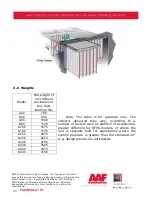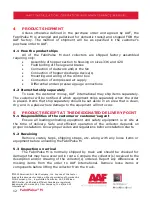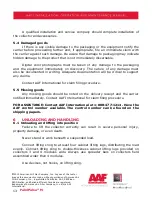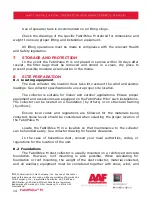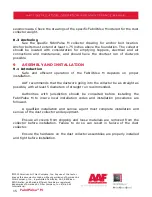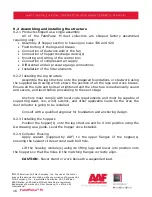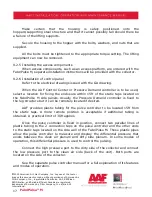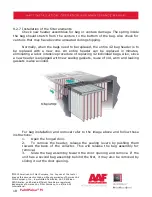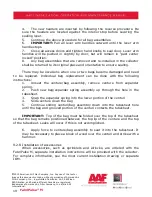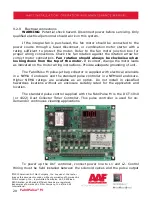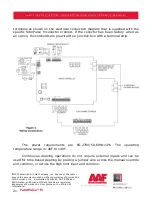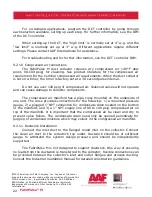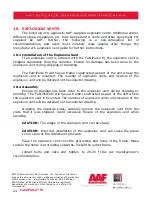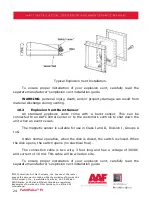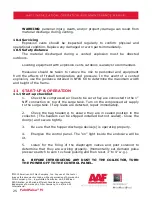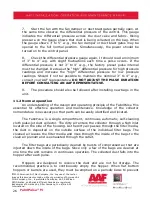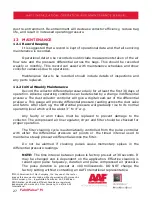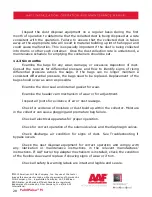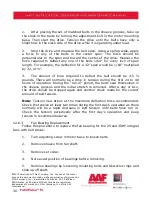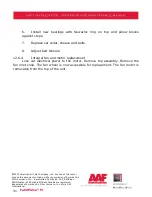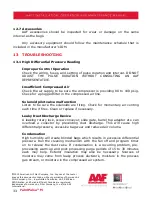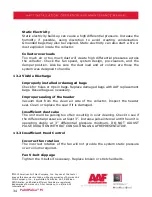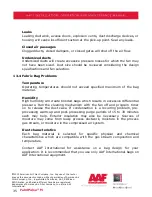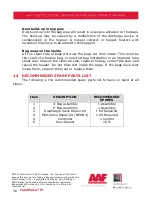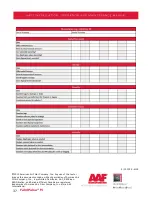
25
FabriPulse
®
M
©
2015 American Air Filter Company, Inc. Any use of the text or
images this document contains, without permission of American Air
Filter Company, Inc., is prohibited. FabriPulse, AAF, REDClean,
REDFiltration, and Reliable Efficient Durable are registered
trademarks of American Air Filter Company, Inc. d/b/a AAF
International.
WARNING: personal injury, death, and/or property damage can result from
material discharge during venting.
10.4
Servicing
Explosion vents should be inspected regularly to confirm physical and
operational condition. Replace any damaged or worn parts immediately.
10.5
Safety distance
The material discharged during a vented explosion must be directed
outdoors.
Locating equipment with explosion vents outdoors is always recommended.
Measures should be taken to reduce the risk to personnel and equipment
from the effects of fireball temperature and pressure. In the event of a vented
explosion, use the guidance detailed in NFPA 68 to determine the maximum width
and height of the flame.
11
START-UP & OPERATION
11.1
Start-up checklist
1.
Check the compressed air lines to be sure they are connected to the 1”
NPT connection on top of the surge tank. Turn on the compressed air supply
to the surge tank. If any leaks are detected, repair immediately.
2.
Check the bag header(s) to assure they are in sealed position in the
collector. (The headers can be shipped installed but not sealed). Close the
door(s) and secure tightly.
3.
Be sure that the hopper discharge device(s) is operating properly.
4.
Energize the control panel. The “on” light inside the enclosure will be
lit.
5.
Listen for the firing of the diaphragm valves and pilot solenoid to
determine that they are working properly. (Momentarily set demand pulse
pressure switch to zero to check pulsing and then reset 3” to 4” w.g.).
6.
BEFORE INTRODUCING ANY DUST TO THE COLLECTOR, TURN
THE POWER OFF TO THE CONTROL PANEL.

